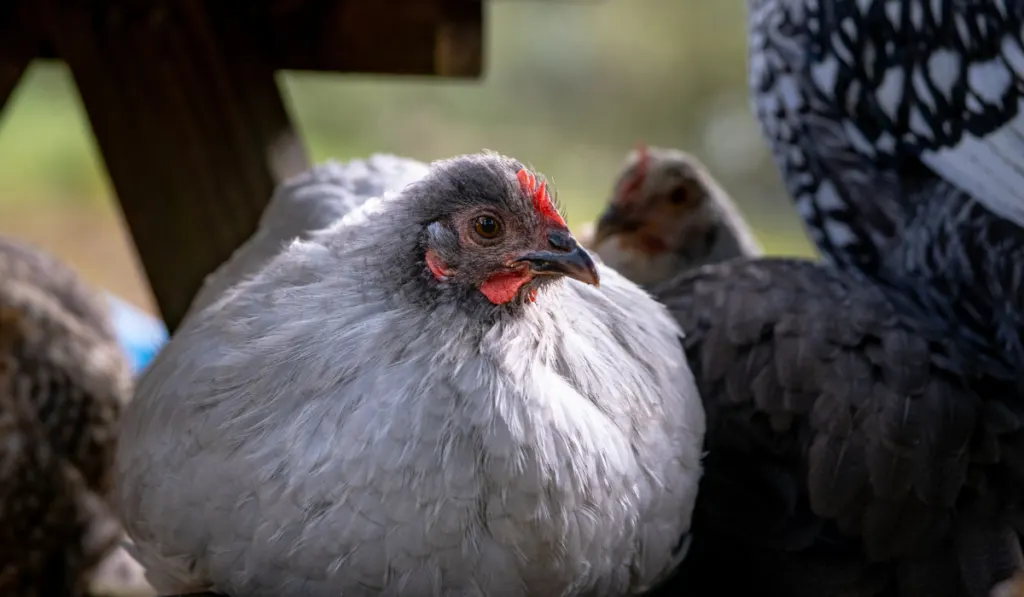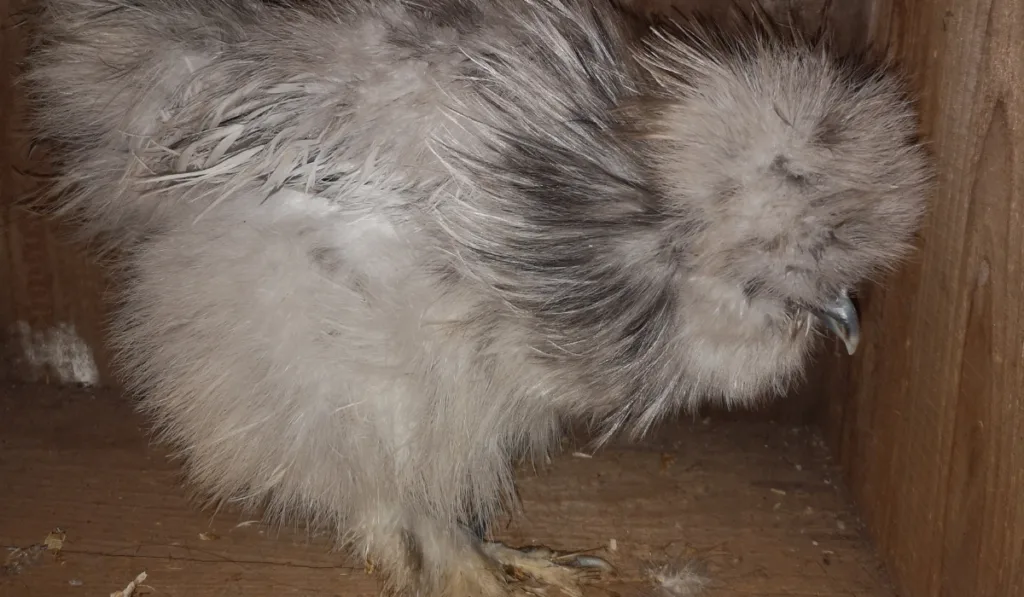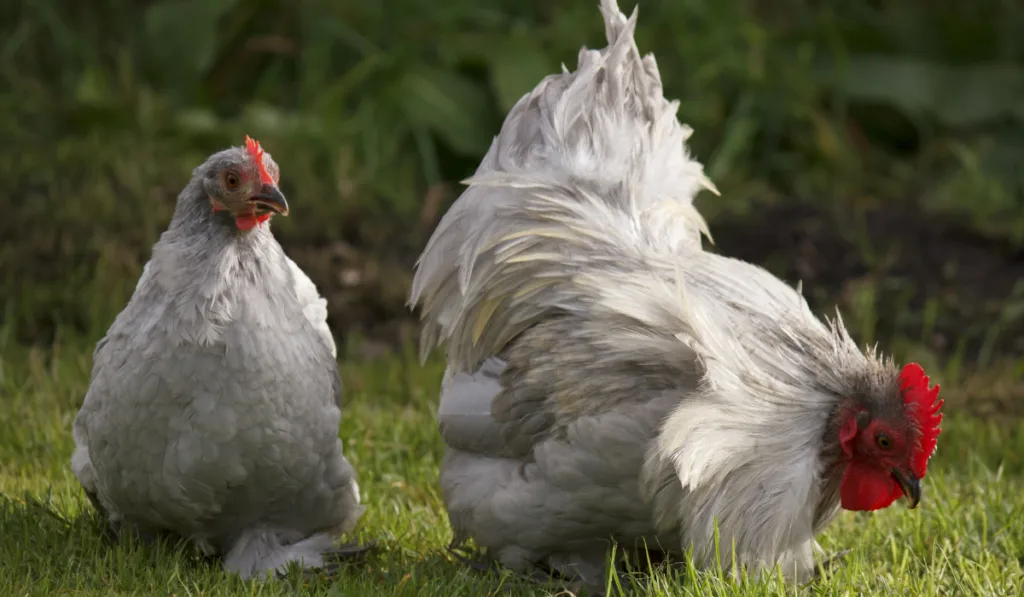Besides being reared for eggs and meat, chickens are sometimes used for exhibition purposes. With the beautiful plumage of these chicken breeds has, it’s not hard to see why people exhibit them.
Chicken breeds come in different colors: black, buff, white, yellow, brown, and even lavender. While colors like black, white, and buff are common, lavender chicken breeds are rare. But they are also beautiful and desirable for exhibition purposes.
The lavender color on chicken plumage is actually perceived as grey. It is formed when a chicken has the recessive gene called the lav gene.
Lav gene dilutes black eumelanin and produces either blue or lavender chickens. Blue chickens are formed when a chicken gets only one copy of the lav gene. On the other hand, lavender chickens, which are also known as self-blue, are formed when the chicken gets two copies of the lav gene.
If you’ve been thinking about getting a lavender chicken, you should read this article. Here are six lavender chicken breeds you can consider when making your choice.
Table of Contents
Lavender Orpington

The Lavender Orpingtons are one of the most recent members of the Orpington family. They were created by Priscilla Middleton around the mid-1900s following repeated crossing efforts.
The Orpington family came to life through the efforts of William Cook in the 1800s while he was trying to breed a decent dual-purpose chicken.
Lavender Orpingtons are quite similar to other Orpingtons, especially the buff types. They are large, fluffy, and have a lot of feathers. They have no beards, no muffs, single red combs, and red wattles.
At one point in the past, Lavender Orpingtons could lay as many as 340 eggs per year. But these days, they average 150-200 light brown eggs per year.
Lavender Orpington hens and pullets are ‘late bloomers’; they usually start laying eggs when they are 24-28 weeks old.
Lavender Orpingtons are self-blues, so they breed true. In other words, if a Lavender Orpington hen mates with a Lavender Orpington rooster, all their offspring will have the same plumage color.
Lavender Silkie

Lavender Silkies come from the Silkie family. Although Silkies have been around as far back as ancient China, the lavender variety did not show up until the early 2000s.
Like other Silkies, Lavender Silkies have a unique appearance. They are a well-feathered breed. Their feathers, which feel like silk, cover almost all parts of their body, leaving only the beak and eyes exposed.
Lavender Silkies are quite small. In fact, according to the standard in some countries, they are bantams. Most Lavender Silkies in the US and Canada are considered bantam, and on average, they weigh 2-4 pounds.
If you want eggs, you shouldn’t count on Lavender Silkies to give you many. They produce just about 100 cream-colored eggs per year, and they are very broody. Some people even rear them to raise the offspring of other chickens because of this trait.
Besides being used for eggs and their broodiness, Lavender Silkies are also used for exhibition purposes.
One unique feature you may notice in a Lavender Silkie is the extra 1 or 2 digits in their feet.
Like Lavender Orpingtons, Lavender Silkies also breed true.
Lavender Ameracauna
Of the many Ameracauna colors available, the Lavender Ameracauna is one of the most recent ones. They are currently unrecognized by the APA.
Lavender Ameracauna belongs to the Ameracauna family, which came to be in the 1970s. Ameracaunas have a fierce hawk-like look. Interestingly, they can actually be docile. Lavender Ameracaunas have beards, muffs, bay-red eyes, red pea combs, and red wattles.
Lavender Ameracaunas fall within the light fowls’ classification. On average, they weigh 5.5-6.5 pounds. They also have bantam varieties, which weigh 1.5-1.9 pounds.
The chickens of this breed are cold-hardy, dual-purpose birds. They lay eggs moderately, and you can get as many as 170-200 blue eggs from them in a year.
Another chicken breed that lays blue eggs is the Araucana breed. Wonder why they are similar in this aspect? Well, Araucanas had a trait that predisposed their chicks to die before they hatched. To circumvent this problem, they were crossbred, and one of those crossbreedings produced Ameracaunas.
Lavender Ameracaunas are quite savvy and watchful. So, they usually do not fall prey to predators.
Lavender Wyandotte
From the Wyandotte family comes the Lavender Wyandotte Chicken. The Wyandottes were created in the 1800s and named after the ‘Wendat’ tribe.
The Lavender Wyandotte, on the other hand, was created very recently. In the 2000s, Allan Brooker bred the Lavender variant of the Wyandottes to life.
Lavender Wyandottes have a round shape, long legs, deep-red wattles, and flat rose-shaped combs. The form of their combs makes them less likely to get frostbite.
This breed comes in standard and bantam varieties. The bantams are about 3-4 pounds, while the standards weigh 6-8 pounds.
If you want a dual-purpose chicken, then the Lavender Wyandottes are an option. They lay around 180-220 creamy-brown eggs per year. However, they are not very broody.
Lavender Wyandotte Chickens are friendly and calm, so they could do well as pets too. They are great foragers, but they can also thrive on land with limited resources.
Lavender Pekin Bantam

Lavender Pekins belong to the Pekin Bantam family. Pekins originated from China, and they are true bantams, only growing about 11 inches tall.
Lavender Pekin Bantams are covered in feathers; they have feathers all over, including their legs and feet. Their feathers are either straight or frizzled, and they come with a single red comb.
On average, they weigh 1.2-1.5 pounds, and they are very rare.
Lavender Pekin Bantams are commonly reared for their eggs. But they lay just about 50-100 small eggs per year – not very great stats. But they are gentle, docile, and friendly, so they would do well as pets.
Birds of the Lavender Pekin Bantam breed are not hardy. So, when it’s cold, you have to ensure they stay warm.
Lavender Barbu d’Anvers
The Lavender Barbu d’Anvers is a bantam breed from Antwerp, Belgium. Chickens of this breed are mainly reared for exhibition purposes, although some people also keep them as pets.
Lavender barbu d’Anvers have small rose combs, short legs, arching tail, and large breasts. Their wattles are either absent or very small, and they have beards that usually conceal their earlobes.
The average Lavender barbu d’Anvers rooster weighs about 1.6 pounds, the hens weigh around 1.4 pounds. Barbu d’Anvers are foragers, and some people say free-ranging makes them live longer.
In case you want your Barbu d’Anvers to run free, ensure you secure the area properly. Their small size makes it easy for them to squeeze through tiny openings, so do well to block such openings.
Lavender Barbu d’Anvers hens are not great layers; on average, they produce three eggs per week. So, you can expect around 150 small creamy eggs yearly. They are broody, however, and they are good mothers.
Resources
- https://meyerhatchery.zendesk.com/hc/en-us/articles/360018411672-What-does-blue-and-lavender-feather-coloring-mean-Will-I-receive-all-blue-chicks-
- https://www.thehappychickencoop.com/lavender-orpington/
- https://www.thehappychickencoop.com/ameraucana/
- https://www.thehappychickencoop.com/blue-laced-red-wyandotte/
- https://thehipchick.com/grey-chicken-breeds/
- https://silkie.org/lavender-silkie-chickens.html
- https://www.raising-happy-chickens.com/wyandotte-chickens.html
- https://greenfirefarms.com/lavender_wyandotte.html
- https://www.raising-happy-chickens.com/wyandotte-chickens.html
- https://www.backyardchickencoops.com.au/blogs/learning-centre/breed-profile-pekin
- https://pekinbantams.org/pekin-bantams-colours-and-patterns.html
- https://www.omlet.co.uk/breeds/chickens/barbu_d’anvers
